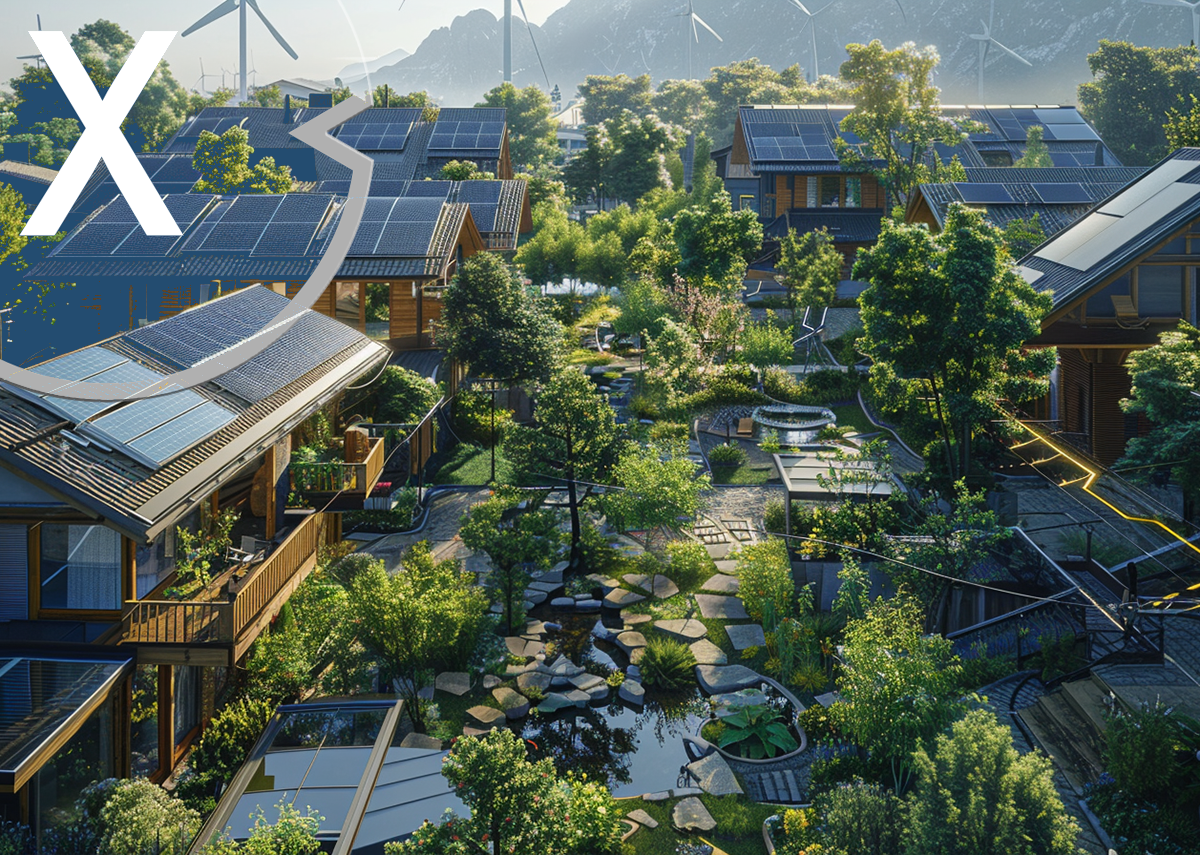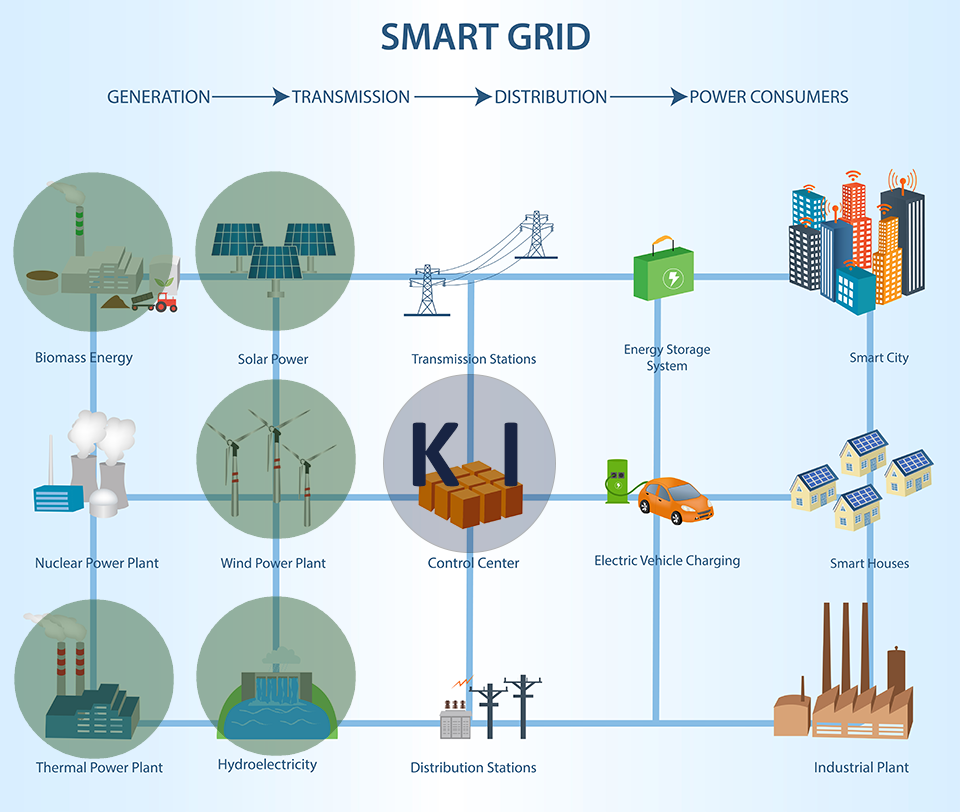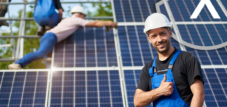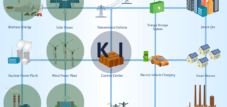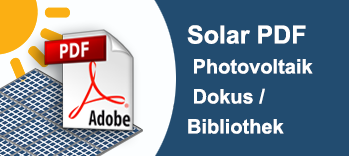Sector coupling: photovoltaics, hydrogen, wind power, heating networks, electricity storage, e-mobility and intelligent networks with AI (smart grid)
Language selection 📢
Published on: May 14, 2024 / update from: August 21, 2024 - Author: Konrad Wolfenstein
🌍✨ Sector coupling: The pioneer for a sustainable future
🔄🌐 Networked power: The paradigm shift through sector coupling in energy production
In today's world, when the urgency to combat climate change is becoming increasingly evident, sector coupling is emerging as an essential pillar of a comprehensive energy transition. This strategic networking - the intelligent integration of energy sectors such as electricity, heat, industry, transport as well as the use of innovative technologies such as photovoltaics, hydrogen, wind power, heating networks, electricity storage, electromobility and, last but not least, artificial intelligence in smart grids - marks a turning point a more sustainable, lower-emission energy system.
The need for this transformation arises from a growing global consensus that it is essential to replace fossil-based energy sources with renewable alternatives to significantly reduce humanity's ecological footprint. A paradigm shift that should neither be rushed nor underestimated.
🌱 The role of sector coupling in the energy transition
The energy transition, which requires extensive restructuring and decarbonization of the existing energy system, has expanded from a previous focus on the electricity sector to a holistic view. In this context, sector coupling proves to be a critical lever for success. It is no longer just about meeting energy needs with renewable sources, but also about ensuring flexible and efficient integration and use of this energy across different sectors.
The use of green hydrogen, which is obtained through the electrolysis of water with electricity from renewable energy sources, exemplifies the ambition to build a bridge between previously isolated energy systems. This can be used as fuel for industrial processes, in the transport sector and for storing and transporting energy. In addition, Power-to-X technologies offer transformative ways to convert renewable energy into various forms of energy such as ammonia, methanol or synthetic fuels and thus make it more widely usable.
💡 Integration through intelligent grids and storage solutions
One of the biggest challenges in a system dominated by renewable energy is its inherent volatility. Wind and sun as primary energy sources are subject to natural fluctuations, which make a continuous energy supply difficult. This is where intelligent power grids (smart grids) come into play, which use artificial intelligence to create precise forecasts about energy demand and supply, thus enabling efficient energy exchange between sectors. In addition, innovative storage solutions - from battery storage to thermal storage to power-to-gas systems - provide an essential buffer function to temporarily store excess energy and access it when needed.
🚗 Electromobility as a cornerstone of the transport transition
In the area of transport, one of the main causes of carbon dioxide-related emissions, electromobility plays a central role in reducing the ecological footprint. The integration of electric vehicles is an example of the connection between mobility and the energy sector. These vehicles not only function as emission-free means of transport, but can also serve as decentralized storage systems in an intelligently networked energy system, absorbing surplus energy and feeding it back into the grid when necessary.
🌍 The economic and social dimensions of sector coupling
Beyond technological feasibility and ecological necessity, the energy transition also has a socio-economic component. The focus is on creating sustainable, future-proof jobs in the areas of renewable energies, network infrastructure and innovative mobility solutions, as well as social justice and avoiding energy poverty. Through the decentralized availability of renewable energies and the use of intelligent technologies, rural and structurally weak regions can also benefit and make an active contribution to the energy transition.
⚙️ Strategic networking
The integration of the different energy sectors through sector coupling is undoubtedly one of the keys to realizing a comprehensive energy transition. However, this strategic networking not only requires innovative technological solutions and political decisions, but also a rethink in society. The transformation of the energy system is a shared task that affects everyone and to which everyone can contribute.
Sector coupling is the key element for the transformation of the energy system from fossil to renewable – Norman Gerhardt, head of the research focus on energy economics and systems analysis at the Fraunhofer Institute
It is time to set the course for the future and to implement a sustainable, resilient and inclusive energy system that meets the requirements of the 21st century.
📣 Similar topics
- 🌍 Rethinking the future: Sector coupling as the key to sustainability
- 💡 Innovations for the energy of the future: photovoltaics, hydrogen & Co
- 🔄 Transformative technologies: How intelligent grids are driving the energy transition
- 🚗 On the way to green mobility: The role of electromobility in the energy transition
- ☀️ From the sun to electricity: Photovoltaics in the age of sector coupling
- 💨 Wind power: An inexhaustible source of energy for the connected future
- 💧 Green hydrogen: bridging industry, mobility and energy
- 🔋 Innovation storage solutions: The invisible heroes of the energy transition
- 🌿 For a green tomorrow: Social and economic perspectives of the energy transition
- ⚙️ Together for the future: The social dimension of sector coupling
#️⃣ Hashtags: #sector coupling #energy transition #sustainability #greentechnologies #futureenergies
📌 Other suitable topics
🌐 Smart Grid: 🤖 Artificial intelligence in the field of renewable energies
While power grids with central power generation have dominated so far, the trend is towards decentralized generation systems. This applies to production from renewable sources such as photovoltaic systems, solar thermal power plants, wind turbines and biogas plants. This leads to a much more complex structure, primarily in the area of load control, voltage maintenance in the distribution network and maintaining network stability. In contrast to medium-sized to larger power plants, smaller, decentralized generation systems also feed directly into the lower voltage levels such as the low-voltage network or the medium-voltage network.
More about it here:
🎯🎯🎯 Benefit from Xpert.Digital's extensive, fivefold expertise in a comprehensive service package | R&D, XR, PR & SEM

AI & XR 3D Rendering Machine: Fivefold expertise from Xpert.Digital in a comprehensive service package, R&D XR, PR & SEM - Image: Xpert.Digital
Xpert.Digital has in-depth knowledge of various industries. This allows us to develop tailor-made strategies that are tailored precisely to the requirements and challenges of your specific market segment. By continually analyzing market trends and following industry developments, we can act with foresight and offer innovative solutions. Through the combination of experience and knowledge, we generate added value and give our customers a decisive competitive advantage.
More about it here:
🌞 German companies and the development of photovoltaics
Sector coupling is a strategy to offer an ecosystem of products and solutions that optimizes the use of renewable energy in all areas of life and advances the energy transition.
🔄 Under the microscope: sector coupling and sustainable energy concepts
In the field of photovoltaics, German companies have focused their activities and products strongly on sector coupling and the integration of renewable energies into various areas of life and the economy. Sector coupling refers to the interaction of different energy sectors such as electricity, heat and mobility with the aim of using energy more efficiently and making the energy supply more sustainable overall.
🌱 Key aspects of sector coupling:
1. ⚡ Photovoltaic systems
High-quality solar panel systems are now known and can be used both in private households and in industry to generate green electricity. These systems are the basis for a decentralized and renewable energy supply and allow users to make a direct contribution to the energy transition.
2. 🔋 Storage solutions
In order to utilize the full potential of photovoltaics, various storage solutions have been developed that increase energy efficiency. These battery storage systems make it possible to store the solar power produced during the day and use it at a later time, which reduces dependence on the public power grid and ensures a more stable and self-determined energy supply.
3. 🌐 Energy management systems
Intelligent control and management of energy flows within the home or business are crucial to maximizing efficiency. German companies offer solutions that connect and optimize various energy sources and consumers, for example by maximizing self-consumption of solar power and minimizing the need for external energy sources.
4. 🚗 E-mobility
Another important sector is mobility. In Germany there are several products and solutions that enable the integration of electric vehicles into the home energy management system. This can be achieved, among other things, through intelligent charging stations that are connected to the household storage system and the photovoltaic system to allow optimized use of self-produced solar power for charging electric vehicles.
🔑⚡ Sector coupling: Key to the energy transition
🔌🔄 Sector coupling is a term that crops up again and again in discussions about the energy transition. But what exactly does it mean and why does it play such a crucial role in the effort to achieve a sustainable energy supply? These questions are central if we want to address the challenges of climate change and shape a greener future.
🔗 The importance of sector coupling
The importance of sector coupling arises from the need to connect different energy consumption sectors - such as transport, industry, heating and cooling and electricity generation. This connection enables the exchange and optimal use of energy between sectors. In this way, excess energy produced in one sector can be used efficiently in another sector instead of remaining unused. This is particularly important given the increasing feed-in of volatile renewable energies such as wind and solar energy.
💡 Challenges and solutions
One of the biggest challenges in the energy transition is ensuring supply at all times and under all conditions. Renewable energies depend on the respective weather conditions and are therefore not always available when demand is greatest. Sector coupling offers innovative solutions here: energy can be stored in the form of heat, hydropower or batteries and then released when it is needed. This helps to balance fluctuations in the energy supply and contributes to a stable and secure energy supply.
✅ Increased efficiency and reduced emissions
Another important point is efficiency. By combining different energy systems and exploiting synergies between sectors, resources can be used more efficiently and emissions reduced. For example, waste heat from industrial processes can be used to heat residential areas, reducing the need for additional energy production and thus leading to a reduction in overall emissions.
🌍 Integration of renewable energies
In addition, sector coupling enables the integration of a higher proportion of renewable energies into the overall system. For example, by using excess solar or wind-based energy to produce hydrogen, it can serve as an energy-rich carrier for sectors that are difficult to electrify, such as heavy-duty transportation or steel production. This green hydrogen can play a key role in the decarbonized economy of the future.
🛠️ Technology and investments
However, the realization of successful sector coupling also requires extensive investments and innovative technologies. Digital technologies play an essential role as they enable efficient monitoring, control and optimization of energy flows between sectors. Intelligently networked systems can match supply and demand in real time and thus maximize energy efficiency.
📈 Political framework and social commitment
A policy framework is also required that supports the transformation of the energy infrastructure and creates incentives for investments in renewable energies and innovative technologies. Regulation must be designed to promote the use of renewable energies while increasing the flexibility of markets to facilitate the integration of different energy sources into the overall system.
The transformation to a climate-neutral society is one of the greatest challenges of our time. Sector coupling is a key concept that not only increases the efficiency of energy supply and reduces emissions, but also creates the basis for the comprehensive use of renewable energies. This approach contributes significantly to reducing dependence on fossil fuels and paving the way towards a sustainable, climate-friendly economy.
In order to fully exploit the potential of sector coupling, a joint commitment from politics, business and society is required. By promoting research and development, creating incentives for renewable energies and implementing innovative technologies, the foundations for a successful energy transition can be laid. It is a task that goes far beyond technical solutions and requires a rethink in all areas of energy consumption. This is the only way we can ensure that future generations live in a world that is not only energy-sustainable, but also economically livable and socially just.
📣 Similar topics
- 🔄 Sector coupling: An introduction to the energy transition
- 🔋 The role of renewable energies in sector coupling
- 🌞 Solar energy and wind power: pillars of renewable energy sources
- 💾 Digital technologies: catalysts for energy efficiency
- 🏭 Industrial waste heat: an untapped potential?
- 🔌 Intelligent networks in the age of sector coupling
- 🚗 Green hydrogen: Bridge to electrify heavy-duty transport
- 💡 Innovations and investments as the key to the energy transition
- 🌱 Political framework for a sustainable energy future
- 🌍 The path to a climate-neutral society with sector coupling
#️⃣ Hashtags: #sector coupling #energy transition #renewableenergies #energyefficiency #climateneutrality
We are there for you - advice - planning - implementation - project management
☑️ Smart City & Factory: Industry expert for energetic 5G buildings and halls as well as advice and installation of solar systems
☑️ Xpert.Plus - logistics consulting and logistics optimization
☑️ Industry expert, here with his own Xpert.Digital Industry Hub with over 2,500 specialist articles
I would be happy to serve as your personal advisor.
You can contact me by filling out the contact form below or simply call me on +49 89 89 674 804 (Munich) .
I'm looking forward to our joint project.
Xpert.Digital - Konrad Wolfenstein
Xpert.Digital is a hub for industry with a focus on digitalization, mechanical engineering, logistics/intralogistics and photovoltaics.
With our 360° business development solution, we support well-known companies from new business to after sales.
Market intelligence, smarketing, marketing automation, content development, PR, mail campaigns, personalized social media and lead nurturing are part of our digital tools.
You can find out more at: www.xpert.digital - www.xpert.solar - www.xpert.plus



